Abstract
The structural modifications and immunochemical activities of several Streptococcus pneumoniae type 19A polysaccharide (PS) preparations have been studied by sugar compositional analysis and immunodiffusion. The 19A PS preparations Lab-A-1 and Lab-A-3 and one PS isolated from 19A strain OB contained fucose (Fuc) and galactose (Gal) in addition to rhamnose (Rha) and glucose (Glc). In contrast, 19A PSs Lab-A-2 and Lab-B contained only Rha and Glc. Despite their different sugar compositions, these 19A preparations appeared to be identical in serologic activity as measured by immunodiffusion with rabbit 19A and 19F antisera. The 19A PS Lab-A-1 was separated into three fractions by DEAE-Sepharose CL-6B column chromatography with a NaCl gradient. Fraction II was the major peak with a yield of 72.9%. Fraction Ia contained Fuc and Gal, while fraction II contained Fuc, Gal, Rha, and Glc. Fractions Ia and Ib did not react with rabbit 19A antiserum. In contrast, 19A PS Lab-A-2 displayed only one peak, which was eluted by a NaCl gradient (0 to 0.6 M NaCl), and contained only Rha and Glc. The 19A PSs prepared from Lab-A and Centers for Disease Control (CDC) strains and grown in pneumococcal inoculum medium (PIM) and modified Holt medium were chromatographed on a DEAE-Sepharose CL-6B column, and the separated fractions were examined for their sugar composition. The fractions obtained from the 19A PSs Lab-A-PIM and CDC-PIM exhibited four sugar components, as observed for the PS Lab-A-1, while the separated fractions from the 19A PSs Lab-A-Holt and CDC-Holt displayed two sugar components, a pattern similar to that of PS Lab-A-2. Thus, the sugar compositions of 19A PS appeared to vary according to the type of culture medium used to grow the 19A organisms.
Full text
PDF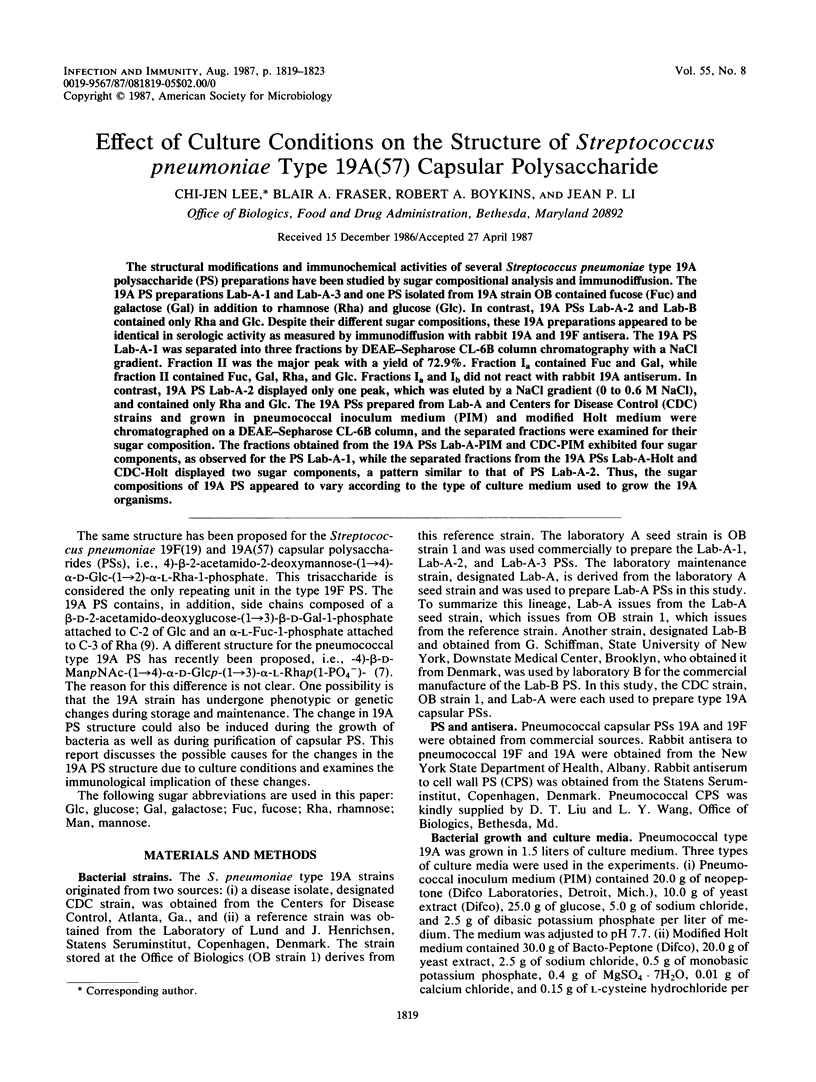
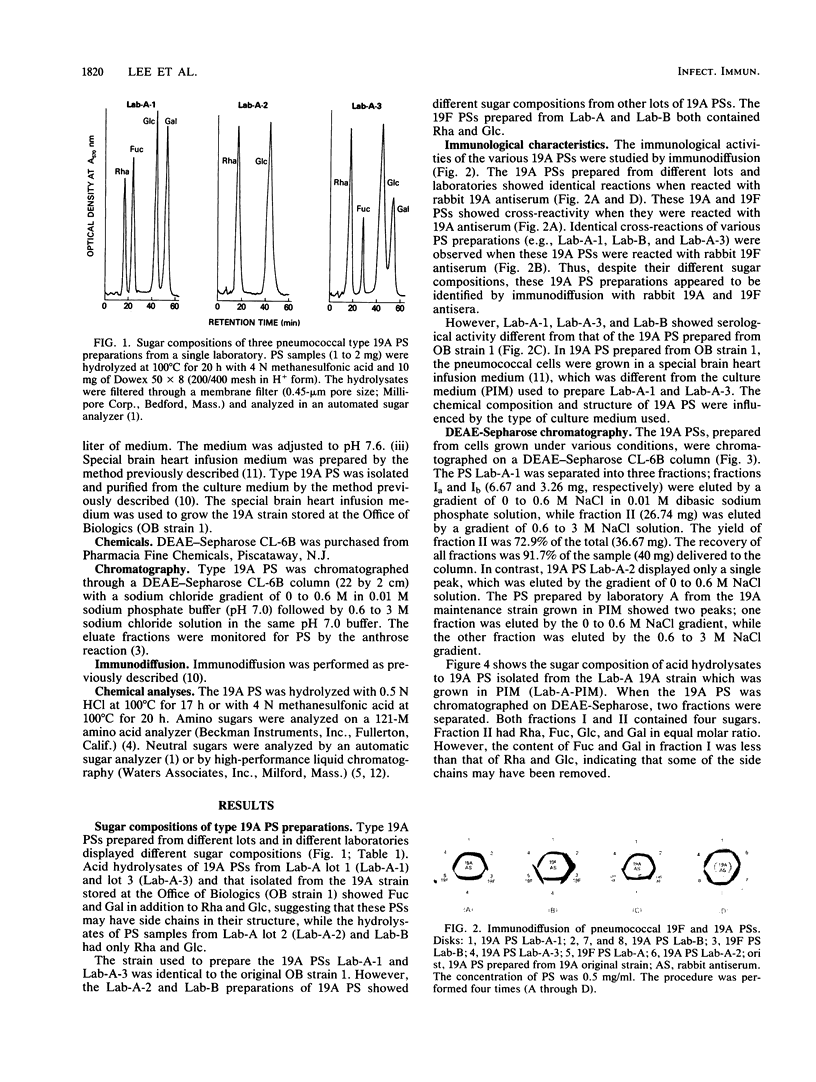
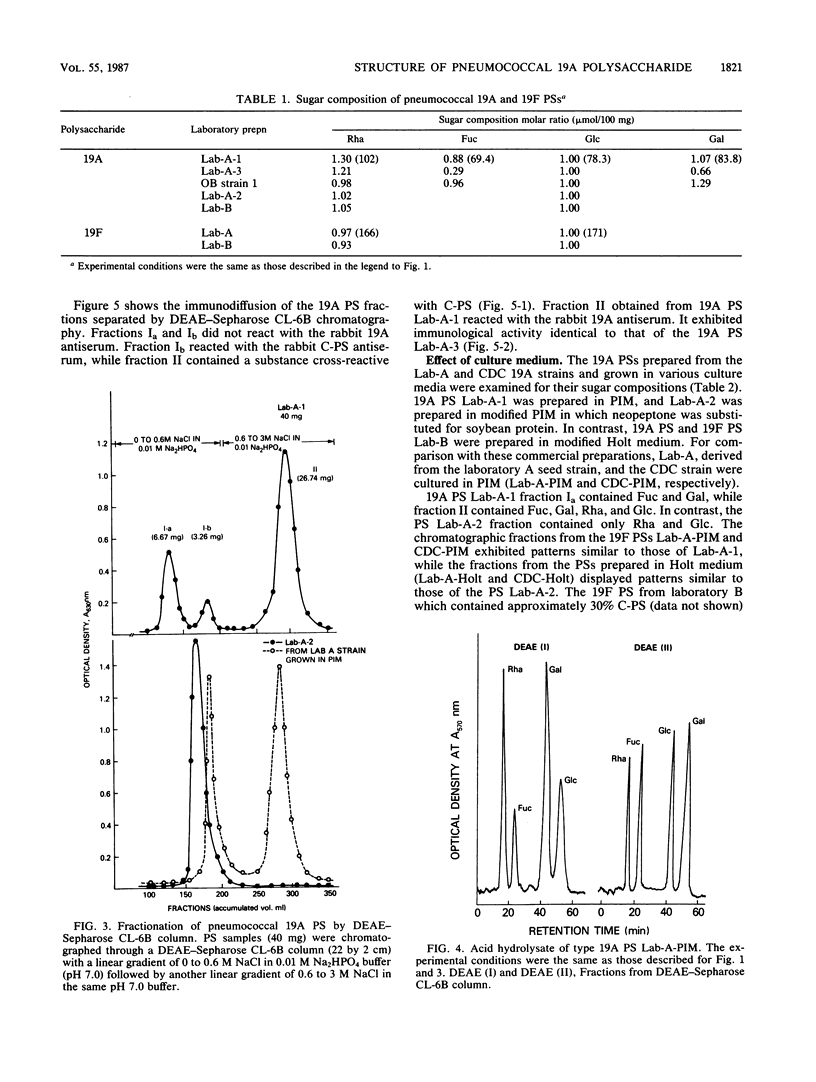
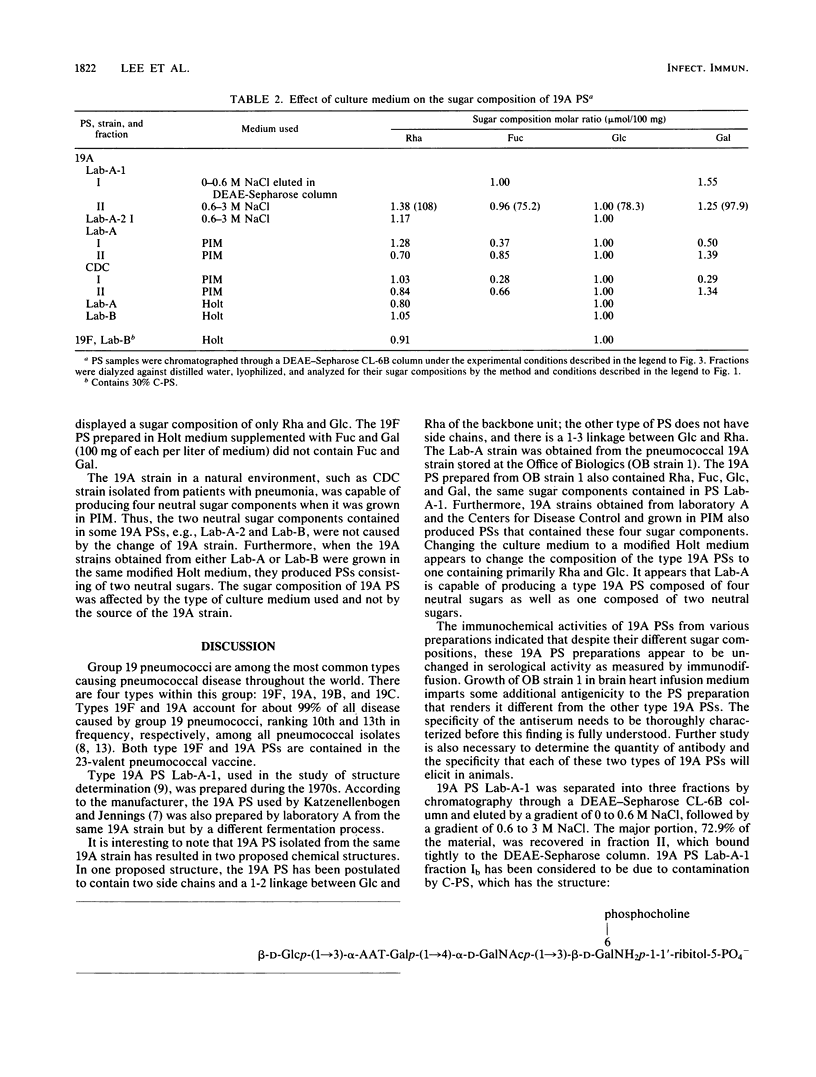
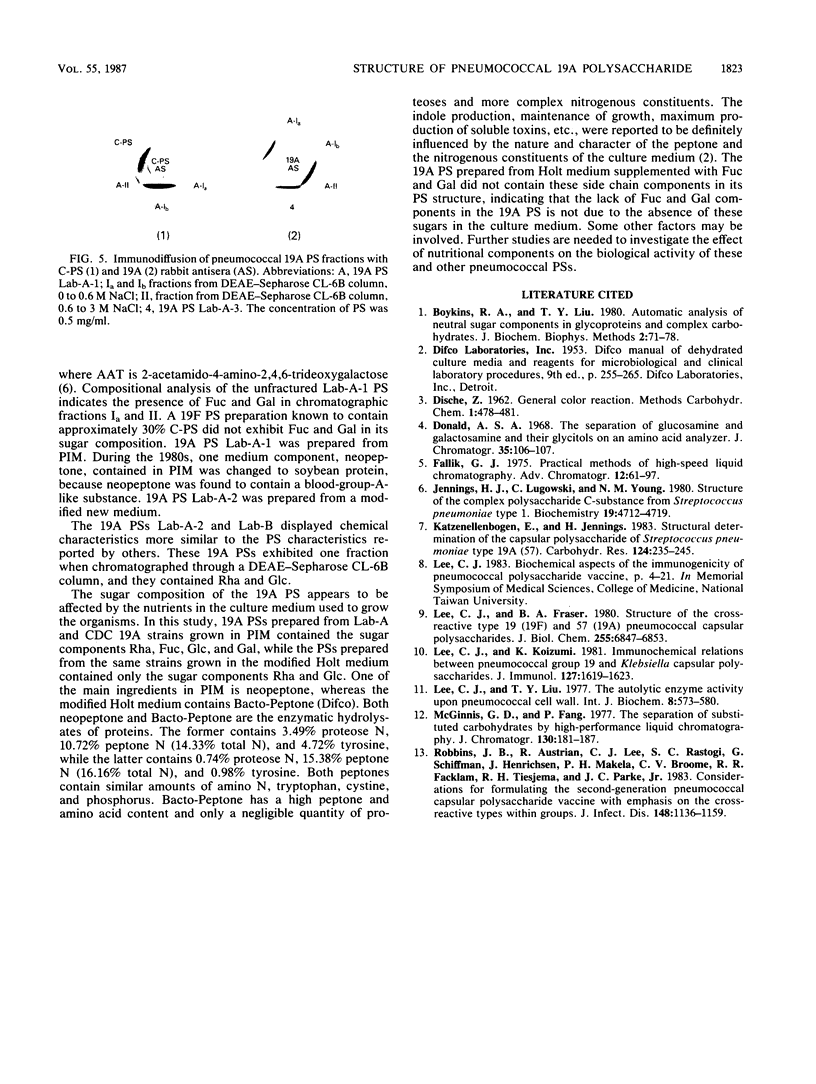
Images in this article
Selected References
These references are in PubMed. This may not be the complete list of references from this article.
- Boykins R. A., Liu T. Y. Automatic analysis of neutral sugar components in glycoproteins and complex carbohydrates. J Biochem Biophys Methods. 1980 Jan-Feb;2(1):71–78. doi: 10.1016/0165-022x(80)90075-5. [DOI] [PubMed] [Google Scholar]
- Donald A. S. The separation of glucosamine and galactosamine and their glycitols on an amino acid analyser. J Chromatogr. 1968 May 21;35(1):106–107. doi: 10.1016/s0021-9673(01)82358-x. [DOI] [PubMed] [Google Scholar]
- Jennings H. J., Lugowski C., Young N. M. Structure of the complex polysaccharide C-substance from Streptococcus pneumoniae type 1. Biochemistry. 1980 Sep 30;19(20):4712–4719. doi: 10.1021/bi00561a026. [DOI] [PubMed] [Google Scholar]
- Katzenellenbogen E., Jennings H. J. Structural determination of the capsular polysaccharide of Streptococcus pneumoniae type 19A (57). Carbohydr Res. 1983 Dec 23;124(2):235–245. doi: 10.1016/0008-6215(83)88459-6. [DOI] [PubMed] [Google Scholar]
- Lee C. J., Fraser B. A. The structures of the cross-reactive types 19 (19F) and 57 (19A) pneumococcal capsular polysaccharides. J Biol Chem. 1980 Jul 25;255(14):6847–6853. [PubMed] [Google Scholar]
- Lee C. J., Koizumi K. Immunochemical relations between pneumococcal group 19 and Klebsiella capsular polysaccharides. J Immunol. 1981 Oct;127(4):1619–1623. [PubMed] [Google Scholar]
- McGinnis G. D., Fang P. The separation of substituted carbohydrates by high-performance liquid chromatography. J Chromatogr. 1977 Jan 11;130:181–187. doi: 10.1016/s0021-9673(00)89794-0. [DOI] [PubMed] [Google Scholar]
- Robbins J. B., Austrian R., Lee C. J., Rastogi S. C., Schiffman G., Henrichsen J., Mäkelä P. H., Broome C. V., Facklam R. R., Tiesjema R. H. Considerations for formulating the second-generation pneumococcal capsular polysaccharide vaccine with emphasis on the cross-reactive types within groups. J Infect Dis. 1983 Dec;148(6):1136–1159. doi: 10.1093/infdis/148.6.1136. [DOI] [PubMed] [Google Scholar]




